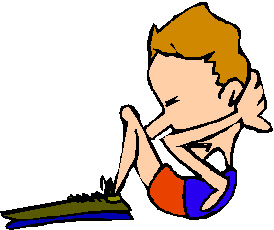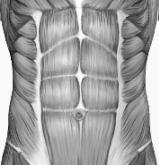By: Alison Hall
 It is commonly believed that six-pack abs are the product of the most popular workout fad. In fact, a library search for “six-pack abs,” came up with 537 hits, yet only 14 were scholarly, peer-reviewed sources. The rest were magazine articles with the next great workout supposedly designed to “shred your abs” or get “rock solid abs.” The workouts were complete core workouts, but most of them made no mention of cardio for overall fat loss or a good clean diet. A well-rounded approach to abdominal training and the coveted six-pack needs to consist of all three.
It is commonly believed that six-pack abs are the product of the most popular workout fad. In fact, a library search for “six-pack abs,” came up with 537 hits, yet only 14 were scholarly, peer-reviewed sources. The rest were magazine articles with the next great workout supposedly designed to “shred your abs” or get “rock solid abs.” The workouts were complete core workouts, but most of them made no mention of cardio for overall fat loss or a good clean diet. A well-rounded approach to abdominal training and the coveted six-pack needs to consist of all three.
Core Strengthening Exercises
While the six pack is aesthetically pleasing, it is more important to strengthen your entire core. The core refers to the abdominal and lumbar spine areas. While strong abdominals can be shown off as the six-pack, a strong back is equally important for good posture and muscular balance. To begin strengthening your core, you should first strengthen your deep core stabilizer muscles. Core stability, defined as a dynamic equilibrium between whole body movement and controlled motion or stability of the spine,1 is critical for controlling the motion of the trunk over the pelvis. This leads to control of your body from head to toe as you move. Once the spine and pelvis can be controlled, dynamic core strengthening exercises can be performed. A variety of equipment can be used, including stability balls, medicine balls, BOSUs, weights, and machines. If you are unsure how to use them, consult a personal trainer. Pilates is a type of exercise that works both core stability and mobility. Joseph Pilates created his exercise series to concentrate on controlling your “powerhouse,” which consists of the core muscles, while moving your limbs with fluidity and precision.2 Mason fitness offers Pilates classes at the RAC. Visit fitness.gmu.edu for more information.
Cardio
No matter how strong your abdominal muscles are, you can’t see them if they’re hidden under a layer of fat. Cardio exercise is essential for many reasons, including improving cardiovascular health, but especially if showing your abs is your goal. The National Academy of Sports Medicine (NASM) recommends at least five days per week (150 minutes total) of moderate intensity cardio, at least three days a week (75 minutes total) of higher intensity cardio, or three to five days per week of a combination of the two.3 Following these recommendations will increase your calorie deficit, helping to lose any unwanted belly fat.
reasons, including improving cardiovascular health, but especially if showing your abs is your goal. The National Academy of Sports Medicine (NASM) recommends at least five days per week (150 minutes total) of moderate intensity cardio, at least three days a week (75 minutes total) of higher intensity cardio, or three to five days per week of a combination of the two.3 Following these recommendations will increase your calorie deficit, helping to lose any unwanted belly fat.
Clean Diet
There’s a saying “you can’t out exercise a poor diet.” All the cardio and core training in the world won’t make a difference in the appearance of your abs if you don’t eat clean. Avoid as much processed food as possible. Select whole grains over refined. Limit soda, alcohol, and sugary foods. Pay attention to serving sizes, and eat an appropriate amount of calories for your activity level. Include a full rainbow of fruits and vegetables every day. The USDA site choosemyplate.gov is an excellent resource for a proper diet. Following these dietary guidelines will help show off all your hard work.
Remember, healthful habits are far more important than how you look. If you train and eat smart, you will reap more benefits than you could ever imagine.
References:
- Weeks B, Horan SA. Core Stability for Performance and Injury Prevention. Modern Athlete & Coach. 2013:51(2);13-16.
- Fitour Primary Pilates Certification Manual, 2008.
- Clark MA, Lucett SC, Sutton BG (Eds.). NASM Essentials of Personal Fitness Training (2012). Baltimore: Lippincott Williams & Wilkins.
